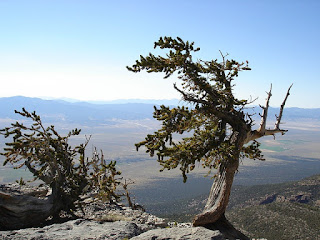Impacting Large Cratonic Basins
A great difficulty for secular geologists to explain through uniformitarian views are the large cratonic basins. In fact, they even admit that their hypotheses do not cover what is actually observed. The Genesis Flood submodel explains these basis far better than the secular views.
The origin of the basins is unknown by uniformitarian geologists, and the problem is compounded by the large volume of sediments, subsidence models have major problems, and other difficulties. (Geologists don't cotton to looking for numerous impact craters on Earth because they assume the planet is ancient, and impacts occurred long ago.) The properties of the basins, however, are consistent with an impact hypothesis in keeping with the Genesis Flood. The Earth is not ancient, and the evidence shows that it was created much more recently than some people are willing to admit.
 |
| Great Basin National Park / tpsdave / Pixabay |
Cratonic basins are mysterious features of the interior of continents. A saucer-shaped feature filled with sedimentary rock is formed but the mechanism of subsidence is unknown. These basins have collected thousands of metres of sediments that in most cases have received little deformation until uplift. Moreover, these basins commonly have thinned crust and an uplifted mantle underneath, and the said crust has relatively high density. Such features are amazingly similar to what is expected after impacts. A brief description of the Belt, Williston, Illinois, Michigan, and Hudson Bay Basins of North America shows that these basins fit an impact origin. Two other amazing basins from other continents, the South Caspian and Congo Basins, also described, can readily be explained by large impacts.To finish reading this technical article from the Journal of Creation, click on "Large cratonic basins likely of impact origin".